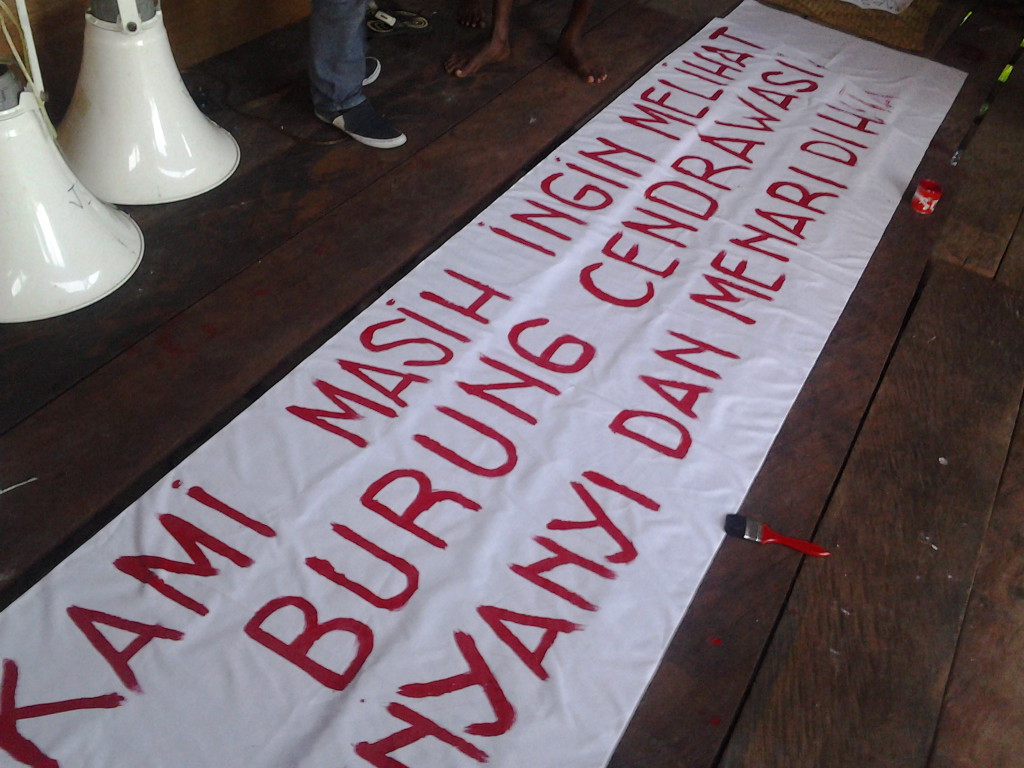 Officials in Jakarta can’t seem to stop making pronouncements promising vast new agricultural expansion along the eastern frontier of the Indonesian state. In May President Joko Widodo announced 1.2 million hectares of rice fields to be developed in three years in the Merauke area of West Papua. Now his agricultural minister, Amran Sulaiman, has apparently said that the government has set aside 500,000 hectares of land for sugar cane plantations to supply ten new sugar factories. Here’s a translation of how Metro TV News reported the story:
Officials in Jakarta can’t seem to stop making pronouncements promising vast new agricultural expansion along the eastern frontier of the Indonesian state. In May President Joko Widodo announced 1.2 million hectares of rice fields to be developed in three years in the Merauke area of West Papua. Now his agricultural minister, Amran Sulaiman, has apparently said that the government has set aside 500,000 hectares of land for sugar cane plantations to supply ten new sugar factories. Here’s a translation of how Metro TV News reported the story:
Metrotvnews, Jakarta: Agriculture minister Amran Sulaiman has set aside 500,000 hectares of land to build sugar factories. The allocated land is spread over three areas: Southeast Sulawesi, the Aru Islands and Merauke.
Amran claims that the land is to accommodate investors who want to invest in developing sugar factories within the country. Until now, Indonesia has always imported raw sugar to be used in industry or to be refined.
“We had a joint meeting to discuss investment. Firstly, to talk about investment in sugar factories which are planned in Southeast Sulawesi. There are three alternatives (for land)”, Amran said at the Investment Planning Board’s (BKPM) offices in Jalan Gatot Subroto 44, South Jakarta on Wednesday 17/6/2015.
The land would be up to 500,000 hectares, he continued, so the capacity of each factory would be 10,000 tonnes of sugar per day. With this amount of land and ten factories, there would be 50,000 hectares for each factory.
“They would also need to have sugar-cane plantations. Each factory would need 50000 hectares of land”, Amran explained.
Meanwhile, the head of the Investment Coordinating Board Frangky Sibarani said that 26 investors had expressed an interest in the sugar sector. The funds they had prepared was no small sum, as the investment required for one sugar factory could be as much as 5 trillion Rupiah.
“The total would be 26 investors, 11 interested in sugar refining and the other 15 would want integrated operations with plantations.”, Franky concluded.
As usual, the central government appears to have paid no attention to the voices of the people who inhabit the far-flung extremities of the archipelago it controls. However, they surely must be aware that in recent years indigenous movements have resisted sugar-cane plantations in two out of the three areas earmarked. In the Aru Islands in 2013-2014, all sections of society united in opposition to the Menara Group’s 500,000 plantation there, and were eventually successful. Meanwhile, in Merauke, of around 24 companies which have been awarded location permits for sugar cane plantations since 2010, only two have actually started working. Indigenous opposition is an important factor in this, particularly in the western part of Merauke where action by the local Malind people saw off the Astra and Mayora groups in 2013.
What’s more, in both those areas, all land is supposed to belong to indigenous communities, therefore it is not up to the agriculture minister to decide how it gets used.
Jacky Manuputty, one of the activists in the #savearu coalition, was quoted in a Forest Watch Indonesia press release as saying:
“In assigning the Aru Islands as one of the areas for sugar development in Eastern Indonesia the Agriculture Minister is showing an arrogant and unilateral attitude, without concern for the desires of the indigenous people of Aru who have already strongly resisted this kind of plan before”. The indigenous people of Aru feel the government is lying to them with this declaration. This unilateral decision will ignite new tensions in the Aru islands “We will continue to put up resistance to this decision and the government should take responsibility for this”.
There is no further information available about the exact locations of the land, or in the case of Merauke, how this will fit with existing permits or the planned 1.2 million hectare rice estate. In the case of the Aru islands, the last thing we heard from central government was former Forestry Minister Zulkifli Hassan backing down from releasing state forest land for the last mega-sugar plan, as more light was being shed on the probable corruption involved. Then, he used the excuse that the land was actually not suitable for sugar-cane, but suddenly it appears to be once more. None of the news outlets which covered this story listed the names of the companies involved.
